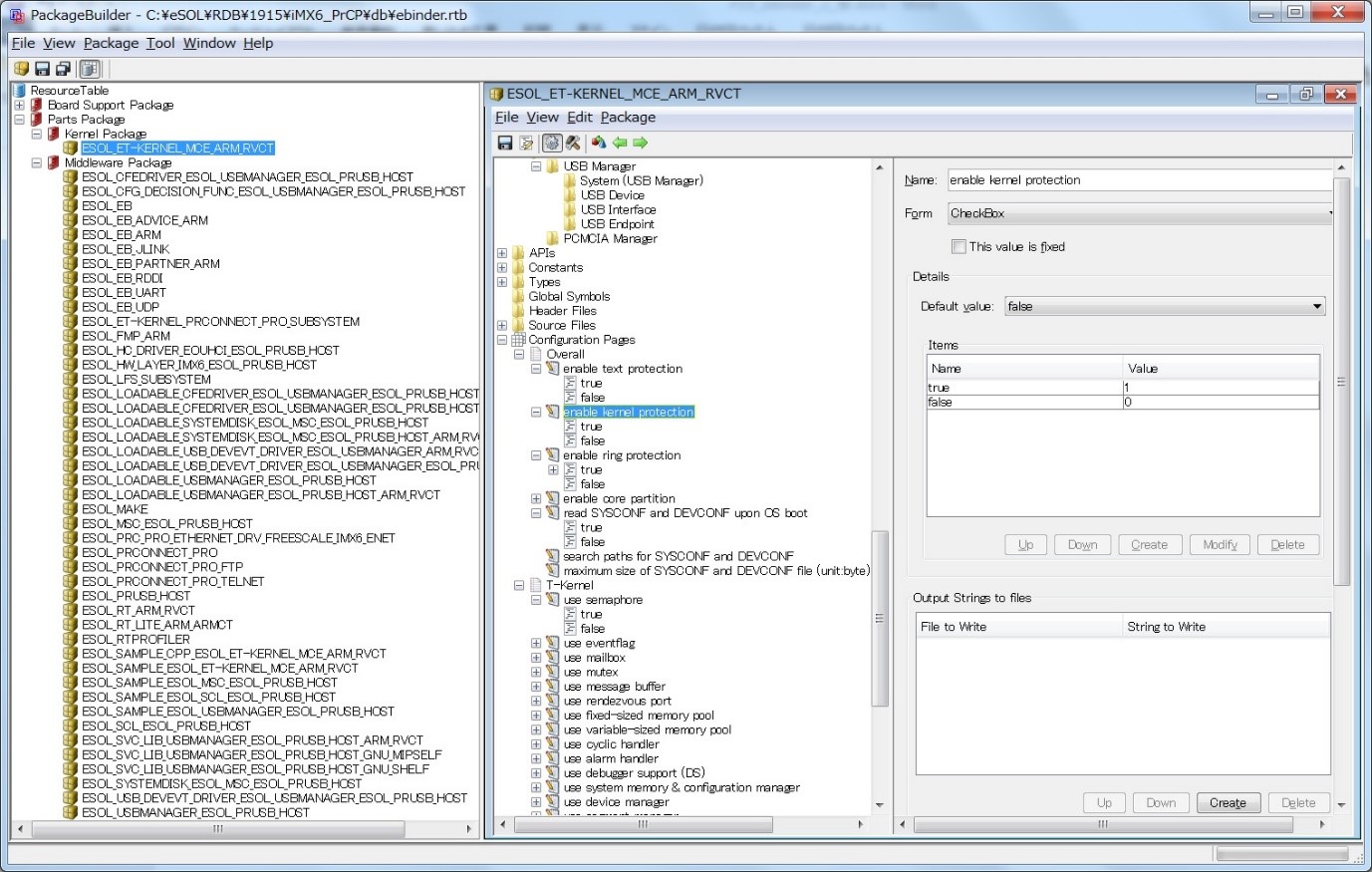eBinder® detail content
1. eBinder Overview
2. Agile-Style Development
3. Advanced/Sophisticated Development Tools
4. Target Development with eBinder
5. eBinder for Arm bundle
6. Using eBinder for multitasking on multicores
7. eBinder JTAG Debugging
8. eBinder System Requirements
9. eT-Kernel™: Part Package for Software Re-use
Problems related to software components
Software components are being used more frequently in the rapid development of embedded systems. However, mastering the use of software components requires knowledge regarding specifications and structure, which places a growing burden on engineers as software components evolve in both performance and complexity.
Part package as a solution
Rather than creating huge documents, a part package takes various supplemental information regarding a software product and packages it with the software itself using XML files and other formats. This allows users to develop efficiently by fully utilizing software components when configuring, building, and debugging with eBinder. Software components converted into part packages provide this type of added value compared with simple documents and source code formats, thereby promoting reuse and redistribution.

Development Support with part packages
The management of software components in eBinder is called the “part package.” “Software components” as defined here refers to commercial real-time operating systems and middleware, libraries, and device drivers created by users themselves, applications, etc. Part packages include source code, configuration information, build information, debugging information, etc.

Benefits of part packages
eBinder uses the various information included in a part package to automatically create optimized tools and function menu configurations. Even in the absence of knowledge concerning the specifications or structure of the software components, eBinder still makes it possible to handle them conveniently and intuitively. This simplifies the process of distributing software components to other departments, projects, collaborating companies, and others and reusing such components during future projects.
Examples of development support using eBinder
- When creating a new project, select the part packages necessary for the system to create a system template.
- Use the GUI screens to set the configuration and build settings for each software part without mistakes.
- Logging and analysis are possible at the software component level, while system analysis tools can be used to reference internal information in real-time.
- Setting the placement of configuration items, value ranges, and so on in a GUI screen
- Creating a build set with file dependencies, compilation options, etc.
- Outputting routine templates for acquiring internal information during system execution
- Runs on a Windows host

Part packaging tool
The target platform modules included with eBinder are already provided as part packages. There is also a dedicated tool for part packages called PackageBuilder. You can use PackageBuilder to create part packages comprising software components, including libraries and device drivers that users have created. In addition, use this when developing a BSP for a custom board.
PackageBuilder
PackageBuilder supports the work of turning software components into part packages. Using eBinder's various development tools and functions makes it possible to intuitively configure, build and debug applications, libraries, middleware, real-time operating systems,, and device drivers when built as part packages, streamlining development. PackageBuilder can also be used when developing a BSP for a custom board.
PackageBuilder provides the following functions:

Configuration
Thanks to the configuration, there is no need to analyze source and headers or configure text-based settings. eBinder's GUI screens can be used to easily input settings, while an error check occurs simultaneously.
Debug
In addition to the kernel, it is also possible to reference internal software component information from the TCP/IP protocol stack and file system while the system is running.
Build
It is easy to manage project build information (compile options, file dependencies, etc.) in eBinder's build screen. Tasks from building to loading can be performed smoothly.
Back to top

 : Part Package for Software Re-use
: Part Package for Software Re-use 